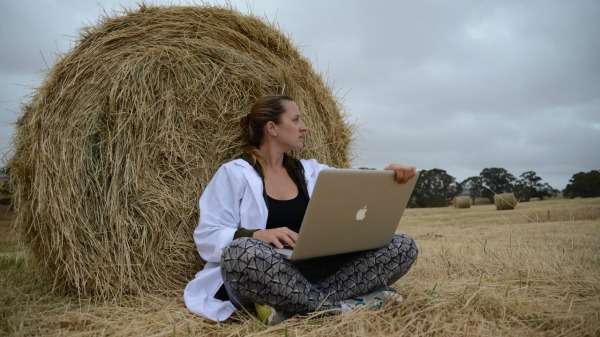Genetic tool to help feed the world

UWA researchers have compiled a database they hope will eliminate much of the time and expense spent developing new crop varieties to feed the world's people.
The research contributes to global food security which is a constant challenge as populations continue to expand and increased salinity, drought, nitrogen deficiency and soil acidity confront farmers in WA and around the world.
The easily-accessible database of food crop proteins called CropPAL is an extensive repository of knowledge about where specific proteins occur within wheat, barley, rice and maize cells.
The CropPAL (Crop Proteins with Annotated Locations) database can be used by crop scientists to explain the functions of proteins, UWA's lead investigator Cornelia Hooper says.
"We're also hoping to build collaborations with people from the biotechnology field to use this data for breeding crops," she says.
Barley breeders, for example, may breed for a particular identified characteristic over nine generations to produce a pure breeding strain which is then grown in various locations to test its suitability as a new variety.
The process typically takes years, but could be streamlined with better knowledge of the plant's various proteins, the functions they perform, and where they are located within the cell.
"Some of them are structural proteins, they make up the structure of a plant or plant cell," Dr Hooper says.
"Other proteins are like machines that process something, so they help make a structure for the cell or produce energy or harness the sun.
"Other proteins are like signals that get shuttled through the cells and they will tell other parts of the plant to, for example, start flowering."
The proportion of proteins performing particular functions varies between species, ARC Centre of Excellence in Plant Energy Biology director Professor Harvey Miller says.
So the proportion of effort that they put into, for example, protein synthesis, defence or photosynthesis varies, he says.
"This is important in understanding why we have these major crops, why they are grown in different locations and what the economic advantages are," he says.
Knowledge of a protein found in one plant species may often help a plant breeder or biotechnologist understand its function when it occurs in another species, or help them better target a breeding program.
Grape, soybean, tomato, potato, canola, sorghum and banana will be added to the database this year.
More information: Cornelia M. Hooper et al. Finding the Subcellular Location of Barley, Wheat, Rice and Maize Proteins: The Compendium of Crop Proteins with Annotated Locations (cropPAL), Plant and Cell Physiology (2016). DOI: 10.1093/pcp/pcv170
Journal information: Plant and Cell Physiology
Provided by Science Network WA
This article first appeared on ScienceNetwork Western Australia a science news website based at Scitech.


















